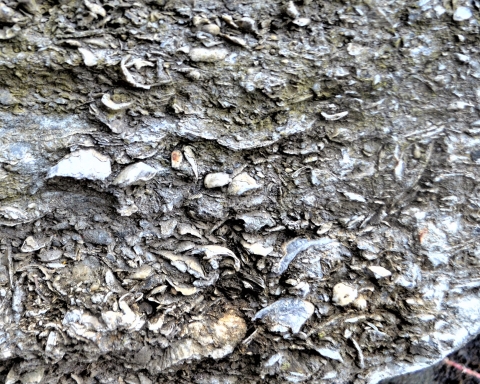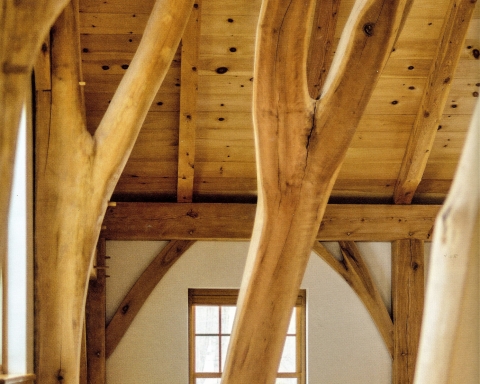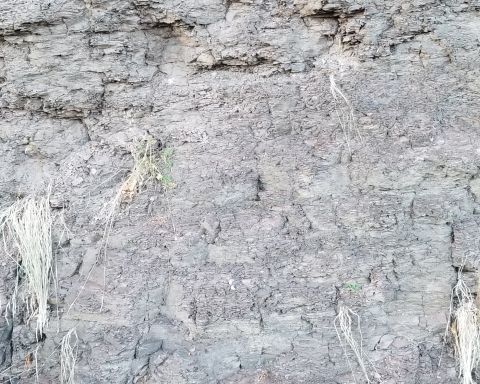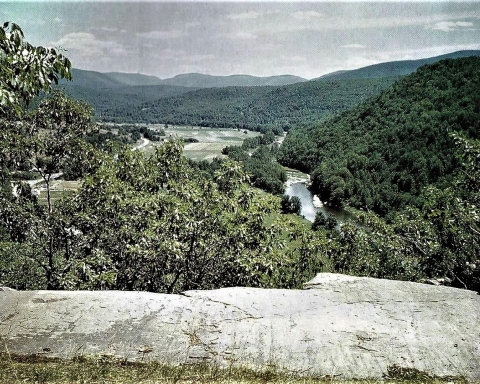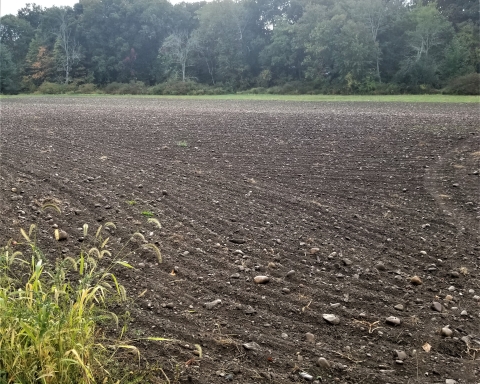The shallow tropical Sea
Stories in Stone
The Independent
Nov. 23, 2007
Updated by Robert and Johanna Titus
It’s the dawn of November 23, 489,007,993 BC. We are the mind’s eyes, the human imagination, and we are drifting eastward over what will someday be the City of Hudson. Down below us is a shallow tropical sea. It should have a name, but it does not. It is not easy to see the expanse of ocean below us. There is just the least bit of a mist down there, just above the water. It’s not the mist of a cool November morning; these are the mists of time and, as always, they obscure.
But there are moments when the mists part and we can see that this ocean is very shallow. There seems to be a light sandy seafloor down there. We descend and find that indeed this is the case. Now we can put a name on this ocean; it is the Potsdam Sea. We get only glimpses of that sea floor and are disappointed to not be able to see anything alive down there. There are active currents and the white quartz sand can be seen to be moving, drifting with the currents. It would seem to be something of a marine desert that we are looking at.
The Potsdam is not our goal on this day; we continue to drift lazily on a course that is just north of east. We are crossing Columbia County as it was during the Cambrian time period. It’s time to learn more about the Cambrian geography. We are the mind’s eye and we can do that very well. We rise up straight into the sky, first miles, then hundreds of miles. Now we can gaze back to the west and survey much of North America as it was back then.
We see endless shallow seas. It would seem that nearly our entire continent is submerged. Across the center of what is today Canada we can see a number of large low islands, but that is all the “landscape” that the Cambrian has given to North America. This is a time of a Greenhouse Earth climate. There are no glaciers anywhere, not even at the poles. The seas have gradually risen up across almost our entire continent. North America is far south of where it is today and it straddles the equator, hence the warmth.
As we continue on our journey east. Now it is a little later in time; we see a lighter, almost pink color on the sea below. This is a different marine setting, a shallower ocean, very hospitable to marine creatures. Its waters are rich in dissolved calcium carbonate and its faunas have used this to manufacture skeletons. This is a carbonate sea, or it might be called a limestone sea.
Florida and the Bahamas are composed of limestone; it’s the bright white rock that you see so commonly down there. The seas of the Bahamas and around Florida are limestone seas; their soft pink sands are typical of such oceans. If you have had the chance to snorkel in such waters, then you will vividly recall the green seaweeds and the colorful tropical fish. It is unforgettable.
But our visit is to the Cambrian. The sea that is now beneath us is called the Stockbridge Sea and those sediments down there will harden into something called the Stockbridge Limestone. We drop down low in the sky and approach the Stockbridge. We gaze down in hopes of seeing a rich marine ecology but are frustrated; the mists of time are thicker here; we can nearly nothing in the water. We do see the aqua color of the sea; we smell the salt and feel the tropical breezes. Occasionally we can make out the vague image of some sort of biological reef, but the image is always so obscure. It is such a shame.
We, the mind’s eyes are now moving forward through time. We travel quickly and soon we reach modern times. We are standing along Route 22 in Canaan. A fine outcropping looms above us. It is the Stockbridge Marble. It used to be limestone, but it was baked during mountain building events, and converted into marble. Baking has produced those mists of time, destroying all the fossils that might have been and blinding us from the images of the ecology that was once here. Again, it is a shame.
Contact the authors at randjtitus@prodigy.net. Join their facebook page “The Catskill Geologist.”

